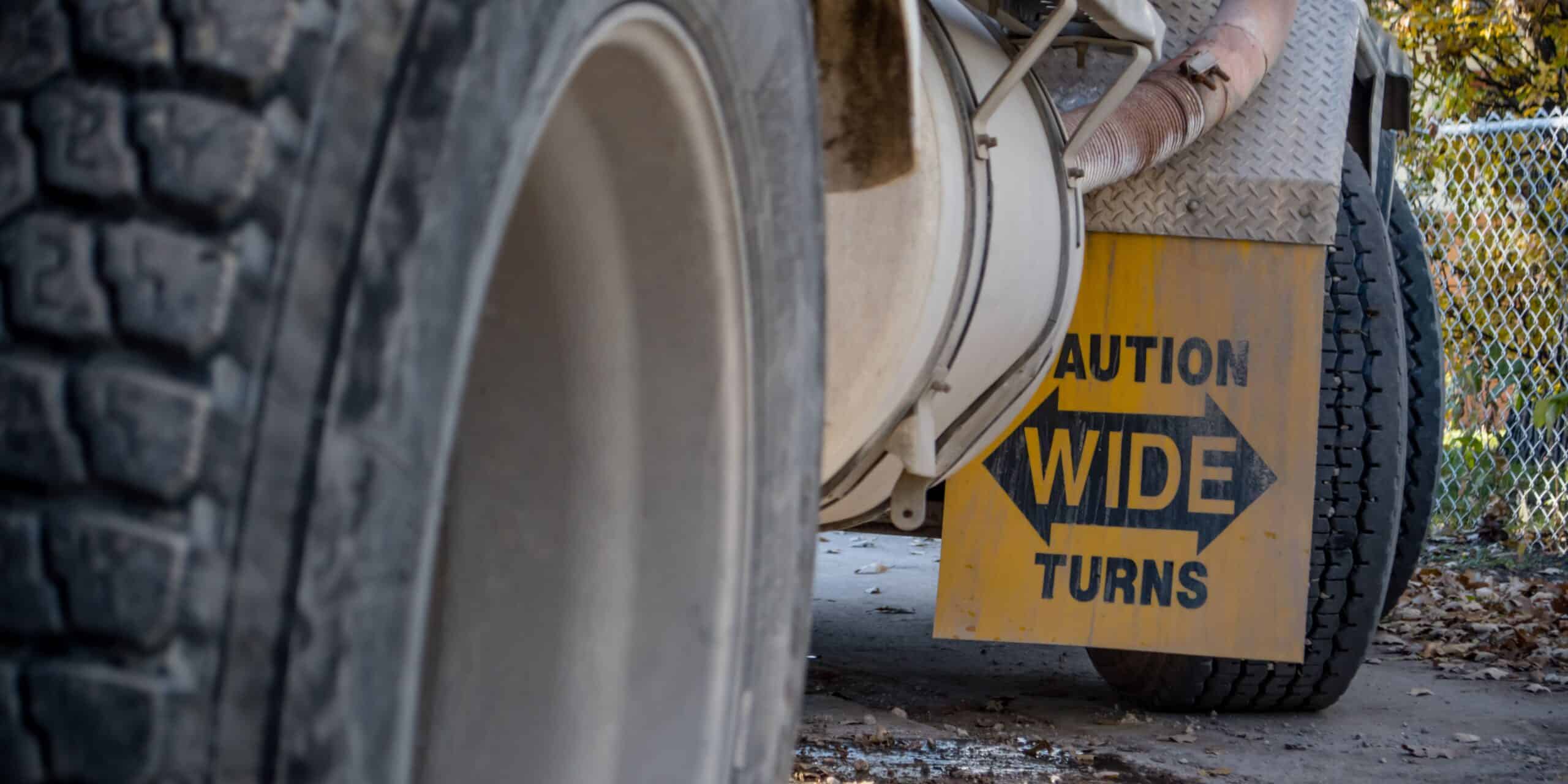Chances are that you don’t spend much time thinking about your truck’s mud flaps, but they serve an important purpose. They’re one of the simplest external safety structures on a vehicle, and for truck drivers, they’re required by state law. So buckle up; it’s time to take a deep dive into these small-but-essential pieces of protective equipment.
What are mud flaps?
Mud flaps are rectangular shields that hang behind a vehicle’s rear wheels, most often composed of rubber, plastic or metal. Each flap must be as wide as the tires they protect, and they serve to prevent mud, dirt and other debris from striking the vehicle or other motorists. They’re used on a variety of consumer and commercial vehicles, and on trucks, they often feature the company brand or logo.
While every U.S. state requires trucks to be equipped with mud flaps, the exact requirements vary from state to state. For example, Maryland requires them to be the same length as the width of the tire. If the tire is 12 inches wide, they should be 12 inches long.
For trucks in Michigan, Pennsylvania and Oklahoma, mud flaps must be able to prevent debris from flying off your tires at a minimum of a 22.5-degree angle.
5 top benefits to know about mud flaps
What are mud flaps for, exactly? They serve a variety of protective functions for the truck itself as well as other vehicles that share the same road, including the following.
Prevents deterioration of the vehicle
Mud flaps prevent road debris and water from spraying the side of your vehicle. Even seemingly harmless debris can have a caustic effect on your vehicle’s exterior paint, and during the winter months, road salt can facilitate the formation of rust. Small rocks and road debris can often be kicked up as you drive by, creating nicks and dings in your vehicle’s exterior.
They cut down on the overall wear and tear that occurs on the roadways. For truckers, that factor is essential for preserving the quality of vehicles. If you’re an owner-operator, your trucks are an investment, so protecting that investment with a set of properly-installed mud flaps is wise.
Protects fender wells
Wheel and fender wells can be easily damaged by road debris, and mud and other gunk can be hard to clean out of these hard-to-access areas. The damage such remnants cause is more than merely cosmetic. Debris clogging the vehicle’s fender wells, for instance, can create problems for wheel axles, among other mechanical components.
Helps block debris from hitting other vehicles on the road
Every truck driver knows just how much waste can litter America’s roadways. At highway speeds, even small pieces of gravel or litter can be flung with dangerous velocity. If it strikes another vehicle, it can result in damage to its fenders, paint job or windshield.
Mud flaps minimize the risk of this happening. In turn, this helps you keep insurance claims down and protects your public reputation.
Prevents splashing pedestrians
When driving through cities, you’re bound to hit more than your fair share of puddles. Unfortunately passers-by doused with dirty water as a result will likely consider their days, like their outfits, ruined.
Getting splashed rarely leads to actual injuries, but it does leave a negative impression, especially if your trucks are branded. When those pedestrians think about your business, they’ll associate it with their damp roadside incidents. A simple set of mud flaps can minimize the splash radius, safeguarding pedestrians, their clothes and your company’s reputation.
Creates a barrier between wheel wells and tires
Though modern truck tires are surprisingly durable, they aren’t immune to harm from road debris. Mud flaps provide a simple, flexible barrier between your wheel wells and the tires themselves that can minimize damage from punctures. Along with potentially preventing catastrophic blowouts, this protects tires from debris that leads to vehicle wear-and-tear.
Are there disadvantages?
When properly installed, mud flaps provide simple, measurable benefits to your vehicle. There are only disadvantages to them when they aren’t properly installed or maintained. They may, for instance, damage the truck undercarriage, create wind resistance or become dislodged and strike another vehicle when installed incorrectly.
Rectifying these issues only adds to your maintenance costs, while the benefits far outweigh the potential risks. And they’ll continue providing benefits as long as they’re maintained.
Protecting more than just your vehicle
Mud flaps will hardly be the most sophisticated feature of your vehicle, but they serve an important purpose. Install and maintain them correctly to extend the life of your vehicle, and protect those with whom you share the road.
FAQ
Nothing! They’re just different terms for the same item. Mud flaps are also commonly known as “mudguards,” “splash guards” and “splash aprons.”
Technically, any external feature on a vehicle will create wind resistance when in motion, and the flexible material of a mud flap is no exception. When installed properly, though, the effect they have on gas mileage is negligible.
While there are no federal regulations requiring mud flaps on commercial trucks, every state in the U.S. requires them on at least the rear wheels. (Check individual state regulations to learn more). Some drivers put flaps on the rear wheels of the rig itself for protection when not hauling a load.


